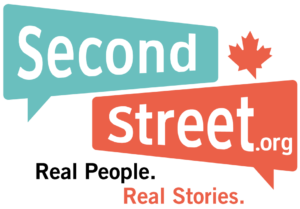SUN NEWS COLUMN: Learning Pods Could Help Families And School System
This year, many parents have taken their children out of public school and shifted to educational alternatives such as homeschooling and learning pods.
Learning pods gather small groups of students to learn together – typically at one of the children’s homes – instead of in a larger school setting.
Not only can learning pods help reduce crowding in public schools, they also provide parents more choice. But they come at a price.
Because of the financial sacrifice, pods or homeschooling are not options for many and challenging for others.
Should the government make accessing learning pods and homeschooling easier for families?
According to a new Leger poll commissioned by SecondStreet.org, the general public is divided on giving some tax dollars back to parents who have taken their kids out of public schools in the wake of COVID-19.
It was a near-three-way split: 34% said the government should take some of the tax dollars these parents pay for the public education system and give a portion back to them to offset some of their costs, while 36% said the government should not.
Twenty-nine per cent were undecided.
When undecideds are removed and the results focus only on respondents who are parents with children in public schools, a slight majority of parents (52%) favour taking some of the tax dollars these parents pay for the public education system and giving a portion back to them.
SecondStreet.org research found that homeschooling, learning pods and independent schools have seen a notable uptick this year.
When Torontonian Rachel Danzinger-Marmer started Learning Pods Canada, it began with her own family.
“I knew my four kids would struggle with the COVID-19 rules,” she told us. “They have difficulties with mask-wearing and struggle with social distancing. I was worried about their well-being and I didn’t want to put other children at risk.”
She also had concerns about the instability of the school year. She wasn’t alone.
“I saw the need for my own family and quickly saw the need across the board.” Danzinger-Marmer said. “I’m passionate about empowering parents to make the best choices for their families right now.”
She started the Learning Pods – Canada Facebook group in July, and it has already grown to 11,700 members. The group connects parents and educators to form their own pods, sign customized contracts and access insurance.
Pricing varies, as with homeschooling. The most significant cost for many is the forgone income of one parent.
Instruction costs range from nearly free (parent teaching) to up to $2,100 per week (full-time facilitator).
Insurance costs $1,000 per year. Curricula ranges from free to $800 annually. Rental space, if used, costs $15 to $50 per day.
In short, learning pods require sacrifice.
Beyond offering direct relief for parents, the government could expand access by reducing red tape.
According to Danzinger-Marmer, families in Ontario are restricted from exceeding five students in an in-person pod, because any more could be considered a private school under provincial regulations.
If governments treated learning pods like homeschool collectives, a pod could welcome two families of three kids rather than just one, effectively splitting the cost in half.
Thinking of crowded classrooms, increasing access for parents who already wish to take their child out means potentially reducing class sizes overall.
Supporting families who choose homeschooling or learning pods in the wake of COVID-19 might be a worthwhile consideration for government – one this poll shows decided parents support.
Paige MacPherson is an independent policy professional and contributor to SecondStreet.org.
This column was published in Sun Newspapers (Toronto, Ottawa, Winnipeg, Calgary and Edmonton) on December 4th, 2020. To see article click here.
You can help us continue to research and tell stories about this issue by making a donation or sharing this content with your friends. Be sure to sign up for our updates too!


